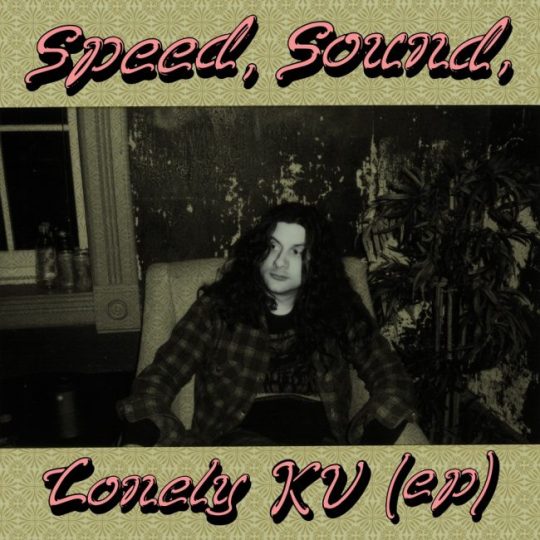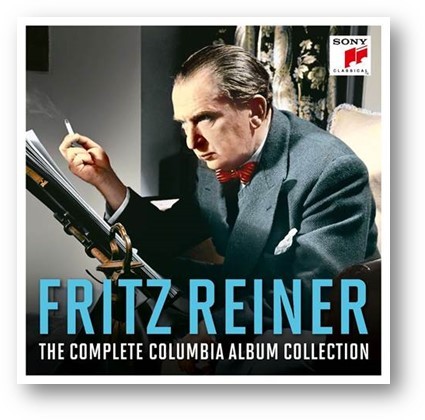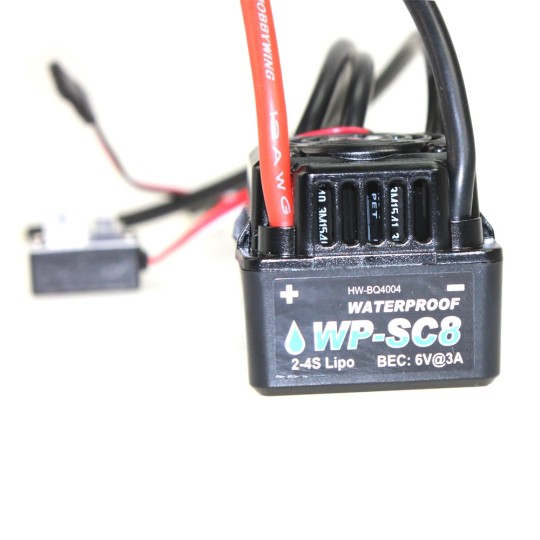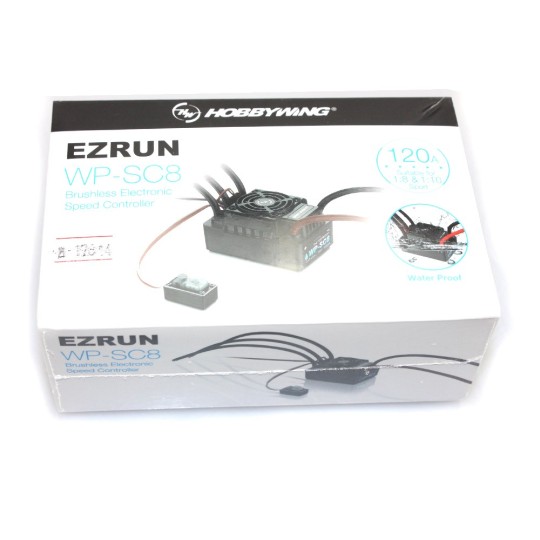#11 kv disc
Photo

11 kv disc insulator,porcelain 11 kv disc insulator,ceramic 11 kv disc insulator,electrical 11 kv disc insulator,11 kv disc insulator manufacturer,high tension 11 kv disc insulator,11 kv disc manufacturer,11 kv disc,h.t. 11 kv disc insulator,insulator 11 kv disc,porcelain 11 kv disc,ceramic 11 kv disc,electrical 11 kv disc,porcelain 11 kv disc manufacturer,ceramic 11 kv disc manufacturer,electrical 11 kv disc manufacturer,porcelain 11 kv disc insulator manufacturer,ceramic 11 kv disc insulator manufacturer,electrical 11 kv disc insulator manufacturer,
#11 kv disc insulator#porcelain 11 kv disc insulator#ceramic 11 kv disc insulator#electrical 11 kv disc insulator#high tension 11 kv disc insulator#11 kv disc manufacturer#11 kv disc#insulator 11 kv disc#porcelain 11 kv disc#ceramic 11 kv disc#electrical 11 kv disc#porcelain 11 kv disc manufacturer#ceramic 11 kv disc manufacturer#electrical 11 kv disc manufacturer#porcelain 11 kv disc insulator manufacturer#ceramic 11 kv disc insulator manufacturer#electrical 11 kv disc insulator manufacturer#11 kv disc insulator manufacturer
1 note
·
View note
Text
What are the types of disc insulators?
Insulators have many types, like shackle, strain, suspension and pin insulator. The insulators work to provide necessary insulation between line conductors and supports and thus prevent any leakage current from conductors to earth which is as important as conductors in the external overhead electrical system. Further information is as following.
A high-quality disc insulator must have high mechanical strength in order to withstand conductor load, wind load etc as well as high electrical resistance of insulator material in order to avoid leakage currents to earth. Besides that, they should be made by high relative permittivity of insulator material in order that dielectric strength is high. The insulator material be non-porous, free from impurities and cracks otherwise the permittivity will be lowered with a high ratio of puncture strength to flashover.
The most commonly used material for insulators of overhead lines is ceramics, but glass, talc and materials with special components are also used to a certain extent. Porcelain is made by firing a mixture of kaolin, feldspar and Shi Ying at high temperature. It is mechanically stronger than glass, and has less trouble in leaking and is less affected by temperature changes.
Different types of insulators in transmission lines:
The most commonly used are pin type, suspension type, strain insulator and shackle insulator.
NO.1 pin insulators
As the first overhead insulator, pin insulators are commonly used among transmission lines with 33kv voltage or lower voltage. Pin insulators can be divided into ordinary type (single umbrella), double umbrella type or three umbrella type, and the choice of these insulators depend mainly on the line voltage. In 11 kV power system, we usually use ordinary pin insulator, that is, the whole pin insulator has only one umbrella canopy.
There are two main reasons for the design of pin insulator umbrella skirt. First of all, since the leakage path of an insulator is through its surface, the leakage distance can be extended by increasing the vertical length of its surface area in the manufacturing process of an insulator. In other words, providing one, two or more canopy or umbrella skirts on the insulator body can make it obtain a longer creep distance. In addition, beside increasing creepage distance, the insulator skirt design has another purpose: when it rains, the outer surface of the umbrella skirt will be wet by rain, but the inner surface will remain dry and non-conductive, thus interrupting the conduction of current on the wet pin insulator surface.
In 33 kv and 66 kV high voltage power system, ordinary pin insulator is difficult to perform the task of high voltage porcelain. Because the higher the voltage, the thicker the insulation layer required to ensure adequate insulation during operation. In this case, power systems prefer multi-umbrella pin insulators, in which multiple umbrella skirts are fastened together to form a complete insulator unit. And 33 kv power system generally uses double umbrella type pin insulator, 66 kV power generally uses three umbrella type pin insulator.
NO.2 suspension insulator
As we mentioned above, with the voltage increasing the costs of using ordinary pin insulator are also growing. Therefore, it is not economical to apply pin insulator in a high voltage transmission line. But suspension insulator could work in transmission lines with a high voltage. Suspension insulator is commonly used in high voltage transmission lines. Suspension insulators can be divided into disk type suspension insulators and rod type suspension insulators. Disk-type suspension insulators are the most widely used insulators in transmission lines. Rod type suspension insulators have been widely used in Germany and other countries.
Suspension insulators consist of several porcelain plates, which are connected in series by metal links in the form of strings. The conductor is carried by the bottom insulator, while the top insulator is fixed to the cross arm of the tower. A single insulator plate can be used for low voltage lines, while multiple insulator plates connected in series can be used for higher voltage lines. For example, six 11kV insulator plates connected in series can be used for 66kV transmission and distribution lines.
NO.3 strain insulator
Strain insulator is an important part of transmission line, including porcelain strain insulator, composite strain insulator and glass strain insulator. Strain insulators can effectively isolate conductors from the ground based on keeping the position of each conductor unchanged, futher to enhance the safety of transmission line environment.
In the daily operation and maintenance of transmission lines, the geographical environment and weather conditions of transmission lines are complex and changeable, and insulators will inevitably be damaged. Tension insulator is the most common product in transmission lines, which is often used together with matching hardware fittings to achieve the function of high voltage electrical porcelain insulation. In addition, in actual business, according to the construction needs of power system, the construction party also combines several tension insulators to meet the tension requirements of transmission lines.
NO.4 shackle insulator
Shackle insulators (also known as spool insulators) are usually used in low voltage transmission lines. It can be used in both the horizontal or vertical positions. With the increasing number of underground cables for distribution purpose, the application of such insulator has decreased rapidly.
If you are looking for a disc insulator supplier, we are looking forward to be your first choice as JiangDong Group Co,Ltd, a professional insulator manufacturer, has engaged in telecom, power, renewable energy for 26 years. If you have any need, please feel free to contact us.
0 notes
Text
I 20 MIGLIORI EP DEL 2020

Nell’esperienza d’ascolto tra i tantissimi album è facile lasciarsi scappare gli EP, sottovalutando la potenzialità e la difficoltà di una formula breve e coincisa come questa. I protagonisti della seconda istallazione della nostra List Week delle classifiche musicali sono proprio loro, i 20 Migliori EP del 2020.
20. Against All Logic - Illusions Of Shameless Abundance / Alucinao (Other People, 2020)

VOTO: 65/100
ascolta
19. Christine and The Queens - La vita nuova (Because Music, 2020)

VOTO: 65/100
ascolta
18. Giumo - Nebbia (Peer Music Italy / KLEENSHEET, 2020)

VOTO: 65/100
ascolta
17. Mick Jenkins - The Circus (Free Nation / Cinematic, 2020)

VOTO: 65/100
ascolta
16. James Blake - Before (Polydor / Republic, 2020)

VOTO: 65/100
ascolta
15. The Japanese House - Chewing Cotton Wool (Dirty Hit, 2020)

VOTO: 70/100
ascolta
14. Animal Collective - Bridge To Quiet (Domino Recording)

VOTO: 70/100
ascolta
13. Slauson Malone - Vergangenheitsbewältigung (Crater Speak) (Grand Closing, 2020)

VOTO: 70/100
ascolta
12. Tricky - 20,20 (False Idols, 2020)

VOTO: 70/100
ascolta
11. JPEGMAFIA - EP! (EQT Records, 2020)

VOTO: 70/100
ascolta
10. Kurt Vile - Speed, Sound, Lonely KV (Matador, 2020)

VOTO: 70/100
ascolta
09. Little Simz - Drop 6 (AWAL, 2020)

VOTO: 70/100
ascolta
08. Flatbush Zombies - now, more than ever (Glorious Dead, 2020)

VOTO: 70/100
ascolta
07. Holly Humberstone - Falling Asleep At The Wheel (Holly Humberstone, 2020)

VOTO: 75/100
ascolta
06. Denzel Curry & Kenny Beats - UNLOCKED (Loma Vista, 2020)

VOTO: 75/100
ascolta
05. Cakes da Killa & Proper Villains - Mauvaland (Classic Music Company, 2020)

VOTO: 75/100
ascolta
04. Zeal & Ardor - Wake Of A Nation (Zeal & Ardor, 2020)

Con la loro interpretazione unica di post-black metal, soul e rituali dalla musica africana, gli svizzero-americani Zeal & Ardor sono una delle band più innovative e fresche della scena alternativa. Wake Of A Nation è la reazione di Manuel Gagneux - la mente dietro al progetto musicale - alle proteste di Black Lives Matter del 2020 nate proprio negli Stati Uniti ed esplose in tutto il mondo dopo la morte di George Floyd. C’è rabbia, tristezza ed intensa fame di cambiamento dentro Wake Of A Nation che arriva dritto al punto con il diversificato impianto sonoro e stili vocali. Gagneux è straordinariamente bravo a conciliare generi musicali ed influenze improbabili quali gli estremi del black metal col soul, il gospel e l’alternative rock più moderno. In Vigil potente e graffiante come Hozier e subito dopo in Tuskegee brutale e diabolico nello screamo e nei riff tuonanti, poi ancora esplosivo ed elettronico come se in un mondo parallelo stessimo ascoltando gli Imagine Dragons se avessero avuto talento e qualcosa di profondamente urgente da dichiarare. Tutto è stilisticamente coerente grazie ai cori, i battiti di mani e le chitarre distorte sfruttate in tutto il loro range. Dal punto di vista dei testi, Gagneux offre anche alcune potenti affermazioni rimanendo fedele all'approccio lirico minimalista della band. Wake of a Nation è una risposta emotiva ma creativa alla disuguaglianza. La riuscita di questa visione la si può capire solo ascoltandola. Un progetto che ci ha assolutamente stupiti.
youtube
VOTO: 80/100
di Viviana Bonura
ascolta
03. Shygirl - ALIAS (Because, 2020)

Se c'è una cosa per cui gli inglesi sono sottovalutati e su cui forse dovremo riflettere è il loro senso dell'umorismo. Me lo fa pensare Shygirl, rapper e disc-jokey, nuova proposta direttamente da South London col suo secondo EP ALIAS. Il lavoro si pone totalmente in antitesi al rap più nasty ed esplicito che per ora va per la maggiore negli Stati Uniti - vedi quello di Cardi B e Megan The Stallion - eppure riesce a risultare cento volte più efficace, sporco e sfacciato tramite un'attitudine sicuramente più quircky e freaky, ma soprattutto grazie al senso dell'umorismo che riesce ad impacchettare certe volgarità e verità scomode in un modo molto più dark e funzionale. Shygirl è spudorata, ma non è stucchevole, e nello sfogo di tutti i suoi strani feticismi ti prende a schiaffi in faccia e ti fa riflettere su certi comportamenti di chi abita la notte. Notte che lei conosce bene e che ci fa sentire anche nella musica, unendo il rap con la musica disco, l'industrial hip-hop e la deconstructed club - si sente la mano occasionale di SOPHIE nelle produzioni - la musica elettronica e l'hyper pop. Non sempre focalizzato in termini artistici, ma nonostante questo rimane un progetto super interessante ed un potenziale trampolino di lancio per fa sì che quest'artista molto interessante possa svettare in futuro.
youtube
VOTO: 80/100
di Viviana Bonura
ascolta
02. Giovanni Truppi - 5 (Virgin Records / Universal Music Italy, 2020)

Giovanni Truppi reinterpreta, rivisita e duetta su tre brani d'amore del suo bellissimo disco Poesia e Civiltà dell'anno scorso e due inediti, dando vita ad un jolly discografico che veste le sue canzoni di abiti nuovi, di un appeal commerciale inaspettato e di grande livello, aggiungendo qualità e sfumature diverse a canzoni che in versione originale suonavano fortemente radicate nel mondo intimo, semplice e costruttivamente poco canonico di Truppi, quasi troppo per essere immaginate con qualcun altro. Eppure ci riesce ricostruendo l'arrangiamento dei brani, creando una realtà parallela in cui queste canzoni possono esistere sotto un'altra forma, una in cui c'è davvero una controparte con cui dialogare. E qui cambia anche il senso della canzone, non più diario ma lettera, e cambia l'esperienza che si sperimenta attraverso la musica, quella della comprensione, della compassione, dell'empatia che si genera attraverso la comunione, lo stare insieme, il contatto.
Dai meravigliosi La Rappresentante di Lista fino a Brunori Sas e Niccolò Fabi, Truppi sceglie tutti artisti dagli universi artistici molto forti ed bravo a non farsi sopraffare o stonare da alcune presenze con cui si trova poeticamente quasi in antitesi, vedi Calcutta, ma nel brano in questione i due riescono a far combaciare le rispettive irregolarità liriche e farceli sembrare più simili di quanto effettivamente siano. Negli inediti Truppi è sempre commovente nelle sue similitudini e nel suo modo delicatissimo ed intriso di poesia di pensare il mondo, le relazioni e l'amore. Giovanni Truppi è ancora l'antidoto migliore alla banalità e all'it-pop.
youtube
VOTO: 80/100
di Viviana Bonura
ascolta
01. Hayley Williams - Petals For Armor I (Atlantic, 2020)

Con Petals For Armor I Hayley Williams debutta da solista senza i Paramore, band storica dalla fama leggendaria e storia travagliata da vicende personali che la frontwoman non ha sempre trovato modo di affrontare e canalizzare. Il suo primo EP, che ha anticipato l'uscita dell'omonimo disco arrivato più tardi, è stato finalmente il risultato artistico di un lavoro profondo e personale di ricanalizzazione. A volte bisogna proprio ripartire dall'inizio, anche da adulti, ed è quello che ha fatto la Williams concettualmente, facendosi custode dell'esperienza artistica di quindici anni di carriera per diventare la custode della sé più giovane e bambina, quella che ha assimilato modelli di affettività tossici senza volerlo e li ha riproposti nella sua vita sentimentale che ad un certo punto è diventata di dominio pubblico. Scava nei suoi traumi per la prima volta da sola ed utilizza la musica per parlare alla sé del passato e ricostruire la Hayley del presente. I brani sono pieni di riferimenti autobiografici, abitati da atmosfere paranoiche, rabbie tranquille, erotismo e femminilità, metamorfosi che passano attraverso stati contorti e mostruosi, prendendo la forma dei propri demoni per poterli esorcizzare. Musicalmente sperimenta con un pop ed un rock raffinato tra St. Vincent ed i Radiohead, l'elettronica ed il jazz.
youtube
VOTO: 80/100
di Viviana Bonura
ascolta
MENZIONE A:
Yo La Tengo - Sleepless Nights (Matador, 2020)
ascolta
serpentwithfeet - Apparition (Secretly Canadian, 2020)
ascolta
Soul Glo - Songs To Yeet At The Sun (Secret Voice, 2020)
ascolta
0 notes
Text
FRITZ REINER

THE COMPLETE COLUMBIA ALBUM COLLECTION
Sony Classical reúne la discografía completa de Fritz Reiner en Pittsburgh y Nueva York en 14 CD. A la venta el 11 de septiembre.
Cuando, a los 50 años, Fritz Reiner fue nombrado director de la Orquesta Sinfónica de Pittsburgh en 1938, todavía era relativamente desconocido en Estados Unidos. Este alumno de Bartók en la Academia de Música de su Budapest natal, ex director de la Ópera Real de Dresde, donde trabajó con Richard Strauss, y durante los últimos 16 años, el director musical de la Orquesta Sinfónica de Cincinnati, rara vez era mencionado en la prensa estadounidense, aunque en realidad había hecho algunos discos en 1938 con la Filarmónica de Nueva York, que fueron emitidos de forma anónima.
Todo cambió para Reiner cuando su mudanza a Pittsburgh llevó a casi una década de grabaciones fundamentales para la Columbia Americana. Sony Classical ahora se complace en presentar una nueva caja de 14 CD que recoge toda la discografía de la Sinfónica de Pittsburgh de Reiner, junto con las grabaciones de Columbia que hizo después de mudarse a Nueva York en 1948, para convertirse en director principal de la Metropolitan Opera.
Reiner ya era un experimentado director de Wagner cuando llegó a Pittsburgh y, como era de esperar, sus primeras sesiones en febrero y marzo de 1940 incluyeron, entre otras selecciones populares, la Cabalgata de las valquirias. Esta es la grabación más antigua del nuevo set y el primer registro comercial acreditado de Reiner. Desafortunadamente, los problemas eléctricos arruinaron los masters de Wagner restantes de 1940, por lo que esas obras tuvieron que volver a grabarse en 1941, Otros que datan de antes de la guerra incluyen el Don Juan de Strauss (de enero de 1941) y Don Quijote, con el violonchelista Gregor Piatigorsky (noviembre de 1941), así como Iberia de Debussy (también de noviembre de 1941).
Tras la prohibición nacional de grabación en tiempos de guerra, Reiner y la orquesta regresaron a la Mezquita de Siria en marzo de 1945 para establecer algunos ejemplos principales del repertorio muy variado del director: la Sexta Sinfonía de Shostakovich; la grabación principal de la suite de Robert Russell Bennett de Porgy and Bess de Gershwin, encargada por Reiner; Divertimento No.1 de su amigo húngaro Léo Weiner; las Danzas de Galánta de otro compatriota, Zoltán Kodály; y la Segunda Sinfonía de Beethoven.
Algunas de sus grabaciones más memorables de Pittsburgh se hicieron en febrero de 1946: la primera producción en estudio del Concierto para orquesta de su antiguo maestro Bartók; Danzas húngaras de Brahms y el primer concierto para piano con Rudolf Serkin; El amor brujo de Falla, un perenne favorito de Reiner, con la excelente mezzo solista Carol Brice, que también grabó Lieder de Mahler eines fahrenden Gesellen durante esas sesiones; y la suite de Le Bourgeois Gentilhomme de Strauss, que Reiner había presentado en los Estados Unidos en Cincinnati. Ninguno de estos, excepto el concierto de Brahms y el Strauss, había aparecido en CD en Sony Classical.
Reiner realizó su última grabación en Pittsburgh, Ein Heldenleben de Strauss, en noviembre de 1947. Dos años más tarde, sus primeras sesiones de Nueva York para Columbia tuvieron lugar en el 30th Street Studio, produciendo un conjunto completo notablemente elegante de los Conciertos de Brandenburgo de Bach. También lanzado por Sony Classical en CD por primera vez, presenta nombres tan ilustres como los clavecistas Sylvia Marlowe y Fernando Valente, el flautista Julius Baker, el trompetista William Vacchiano, el oboista Robert Bloom, el violista William Lincer y el violonchelista Leonard Rose. Unos meses antes, Fritz Reiner hizo una de sus grabaciones más famosas de todas. Estuvo en el Metropolitan dirigiendo el Salomé de Strauss con el mejor exponente del papel principal, Ljuba Welitsch, haciendo su debut en la casa. En medio de la carrera en marzo, en el 30th Street Studio, Columbia capturó la escena final en el disco, una grabación que ha conservado su estado de referencia.
En 1953, el capítulo final de la larga carrera de Fritz Reiner comenzó cuando se convirtió en director musical de la Orquesta Sinfónica de Chicago y comenzó una famosa serie de grabaciones estéreo para RCA Victor. Pero cualquier apreciación completa del legado de este legendario director de orquesta debe incluir sus logros anteriores para Columbia Records en Pittsburgh y Nueva York. Para todos los innumerables aficionados de Reiner en todo el mundo, la nueva caja de 14 CD de Sony Classical será una escucha esencial.
Fritz Reiner – The Complete Columbia Album Collection
DISC 1:
Ravel: La Valse, M. 72 (Remastered)
Debussy: Images, L. 122: Ibéria (Remastered)
Berlioz: La damnation de Faust, H. 111: Marche hongroise (Remastered)
Debussy (orch. Ravel): Danse "Tarantelle styrienne", L. 69 (Remastered)
DISC 2:
Wagner: Die Meistersinger von Nürnberg, WWV 96: Prelude to Act I (Remastered)
Wagner: Siegfried, WWV 86C: Waldweben (Remastered)
Wagner: Lohengrin, WWV 75: Prelude to Act I (Remastered)
Wagner: Lohengrin, WWV 75: Prelude to Act III (Remastered)
Wagner: Die Walküre, WWV 86B: Walkürenritt (Remastered)
Wagner: Tannhäuser, WWV 70, Act I: Bacchanale and Venusberg Music (Remastered)
Wagner: Die Meistersinger von Nürnberg, WWV 96, Act III: Vorspiel (Remastered)
Wagner: Die Meistersinger von Nürnberg, WWV 96, Act III: Tanz der Lehrbuben (Dance of the apprentices) (Remastered)
Wagner: Die Meistersinger von Nürnberg, WWV 96, Act III: Aufzug der Meister (Entrance of the Meistersingers) (Remastered)
DISC 3:
Beethoven: Symphony No. 2 in D Major, Op. 36
Mussorgsky: A Night on Bald Mountain, IMM 43 (Remastered)
Gershwin (arr. Bennett): Porgy and Bess "A Symphonic Picture"
DISC 4:
Brahms: Concerto No. 1 in D Minor for Piano and Orchestra, Op. 15
DISC 5:
Bartók: Concerto for Orchestra, Sz. 116 (Remastered)
Glinka: Kamarinskaja "Wedding Song and Dance Song"
Rossini: Il signor Bruschino, IGR 64: Overture (Remastered)
DISC 6:
Mahler: Lieder eines fahrenden Gesellen (Remastered)
Bach: Magnificat in D Major, BWV 243, No. 2: Et exultavit (Remastered)
Bach: Magnificat in D Major, BWV 243, No. 9: Esurientes implevit bonis (Remastered)
Bach: Mass in B Minor, BWV 232, Part I, No. 10: Qui sedes ad dexteram Patris (Remastered)
Bach: Mass in B Minor, BWV 232, Part IV, No. 26: Agnus Dei (Remastered)
Falla: El amor brujo "Ballet-pantomime" (Remastered)
DISC 7:
Brahms: 21 Hungarian Dances, WoO 1: No. 5 in G Minor (Orch. Parlow) (Remastered)
Brahms: 21 Hungarian Dances, WoO 1: No. 7 in F Major (Orch. Schmeling) (Remastered)
Brahms: 21 Hungarian Dances, WoO 1: No. 12 in D Minor (Orch. Parlow) (Remastered)
Brahms: 21 Hungarian Dances, WoO 1: No. 13 in D Major (Orch. Parlow) (Remastered)
Brahms: 21 Hungarian Dances, WoO 1: No. 6 in D Major (Orch. Parlow) (Remastered)
Brahms: 21 Hungarian Dances, WoO 1: No. 21 in E Minor (Orch. Dvorák) (Remastered)
Brahms: 21 Hungarian Dances, WoO 1: No. 19 in B Minor (Orch. Dvorák) (Remastered)
Brahms: 21 Hungarian Dances, WoO 1: No. 1 in G Minor (Orch. Brahms) (Remastered)
Strauß, J. II: Rosen aus dem Süden, Op. 388 (Remastered)
Strauß, J. II: Schatz-Walzer, Op. 418 (Remastered)
Strauß, J. II: Wiener Blut, Op. 354 (Remastered)
Rodgers (arr. Don Walker): The Carousel Waltz (From "Carousel") (Remastered)
DISC 8:
Strauss, R.: Ein Heldenleben, Op. 40
Strauss, R.: Le bourgeois gentilhomme, Op. 60
DISC 9:
Mozart: Symphony No. 35 in D Major, KV. 385 "Haffner"
Bach, J. S.: Orchestral Suite No. 2 in B Minor, BWV 1067 (Remastered)
Bach, J.S. (arr. Lucien Cailliet): Little Fugue in G Minor, BWV 578 (Remastered)
Mozart: Symphony No. 40 in G Minor, KV. 550
DISC 10:
Shostakovich: Symphony No. 6 in B Minor, Op. 54
Kabalewksy: Colas Breugnon, Op. 24: Overture
Kodály: Dances of Galánta (Galántai Táncok)
Weiner: Divertimento No. 1 for String Orchestra, Op. 20 "Nach alten ungarischen Tänzen"
Tchaikovsky: Suite No. 1 in D Major, Op. 43: V. Marche Miniature
Bartók: Hungarian Pictures, Sz. 97
DISC 11:
Bach, J.S.: Brandenburg Concerto No. 1 in F Major, BWV 1046 (Remastered)
Bach, J.S.: Brandenburg Concerto No. 2 in F Major, BWV 1047 (Remastered)
Bach, J.S.: Brandenburg Concerto No. 3 in G Major, BWV 1048 (Remastered)
DISC 12:
Bach, J.S.: Brandenburg Concerto No. 4 in G Major, BWV 1049 (Remastered)
Bach, J.S.: Brandenburg Concerto No. 5 in D Major, BWV 1050 (Remastered)
DISC 13:
Mozart: Don Giovanni, K. 527, Act I: "Don Ottavio! son morta!" (Recit.), "Or sai, chi l'onore" (Aria)
Mozart: Don Giovanni, K. 527, Act II: "Crudele! Crudele?..." (Recit.), "Non mi dir, bell'idol mio" (Aria)" (Voice)
Dargomizhsky: Songs and Romances, Volume I: 36. Mne grustno
Dargomizhsky: Songs and Romances, Volume I: 46. Melnik
Mussorgsky: Rustic Song in F Minor "Where are You Little Star"
Marx: Hat dich die Liebe berührt, IJM 11
Marx: Pierrot Lunaire, Op. 21: 5. Valse de Chopin
Strauss, R.: 8 Gedichte aus 'Letzte Blätter', Op. 10: 3. Die Nacht
Strauss, R.: 4 Lieder, Op. 27: 2. Cäcilie
Strauss, R.: Salome, Op. 54: Final Scene
DISC 14:
Strauss, R.: Don Quixote, Op. 35 (Remastered)
Strauss, R.: Don Juan, Op. 20
Honegger: Concertino for Piano and Orchestra, H. 55 (Remastered)
0 notes
Text
New Post has been published on Cheap camera shop
New Post has been published on http://cheapcamera.kolonel.info/products/hobbywing-ezrun-wp-sc8-120a-waterproof-speed-controller-brushless-esc-for-rc-car-short-truck-f17814/
Hobbywing EZRUN WP SC8 120A Waterproof Speed Controller Brushless ESC for RC Car Short Truck F17814

Hobbywing EZRUN WP SC8 120A Waterproof Speed Controller Brushless ESC for RC Car Short Truck F17814
Specifications: EZRUN-WP-SC8: 1/8 short card Sport, 1/8 power room / more power / Truck Sport, 1/10 truck / truck Sport 1.1 Output capability: EZRUN-WP-SC8 ESC: Con. current 120A, instantaneous current 760A; 1.2 Power input: EZRUN-WP-SC8 ESC: Section 6-12 NiMH / NiCd battery pack or 2-4S Lipo ; * Note 1 1.3 BEC output: EZRUN-WP-SC8 ESC: 6V / 3A (switch mode regulator Switching Mode); 1.4 Resistance: EZRUN-WP-SC8 ESC: 0.0004 ohms; 1.5 Support Motor type: Brushless no sense (also supports felt no sense of the brushless motor running mode); 1.6 Number of support motor T: EZRUN-WP-SC8 ESC: Section 2 lithium or 6 NiMH: KV≤6000; Section 3 lithium or 7-9 NiMH: KV≤4000; Section 4 Section 10-12 lithium or NiMH: KV≤3000; 1.7 Applicable models: EZRUN-WP-SC8 ESC: 1/8 and 1/10 of the proportion of the short card / cross country / Bigfoot; 1.8 Dimensions: 53.5mm (length) * 36mm (width) * 36mm (height); 1.9 Weight: 98g Note 1: EZRUN-WP-SC8 fan built by the ESC BEC power supply, rather than directly to take power from the battery pack. Features : 1 integrated design, especially for short-haul trucks and off-road vehicles; 2 EZRUN-WP-SC8 ESC built-in switch mode regulator (Switching Mode) BEC, with a strong current output capacity, and without even working on plug-UBEC 4S lithium time; 3 The main electronic components tightly sealed, splash water proof dust. The bottom surface of mounting holes for fixed to the frame; 4 The new program algorithm has excellent effects start (start acceleration 9 kinds), and the acceleration throttle linearity; 5 rich parameter options for a variety of chassis, tires and venues; 6 with an electronic brake function, and compatible with traditional mechanical disc brake system; 7 Multiple protection features: low battery voltage protection, over temperature protection, throttle control protection, stall protection; 8 software into the angle adjustment and angle adjustment into the traditional way (rotating motor cover to change the relative position of the sensor) having the same effect, the method is more simple and more delicate, no risk of damage to the motor or ESC; 9 Speed programmed, there is a single bond and factory reset function; 10 supports a variety of parameter setting mode: ESC key, the ESC program card, 2-in-1 multi-functional professional programming box, PC special program; 11 can be used on professional programming box USB interface power transfer firmware upgrade online









0 notes
Text
Việt Phát chuyên phân phối các sản phẩm ống co nhiệt trung thế các loại hay còn gọi là ống co ngot trung thế, ống khò nhiệt, ống teo nhiệt bọc các thiết bị điện trung thế từ 1KV đến 35KV. Ống co nhiệt trung thế giá tốt chất lượng cao do Việt phát cung cấp giao hàng toàn quốc. Ống co nhiệt loại trung thế thường được dùng để bọc các thiết bị điện trung thế như thanh cái trong các tủ bảng điện, hay bọc các thiết bị cơ khí nhằm tránh bị rò rỉ điện hoặc giúp thiết bị tránh bị ảnh hưởng của môi trường.
Ống co nhiệt trung thế các loại thông thường được dùng để bọc cáp điện hoặc thanh cái. Chúng có đặc tính rất bền bỉ và chịu được tác động môi trường cao.
Sử dùng điện áp từ 5 kV đến 35 kV. Sau khi bọc sẽ đảm bảo độ cách điện và an toàn lúc vận hành.
Đáp ứng các yêu cầu của tiêu chuẩn ANSI / IEEEC37.20 và tiêu chuẩn điện lực Việt Nam.
Ống co nhiệt trung thế Các loại – Mục Đích sử dụng
+ Giúp bảo vệ an toàn cho cáp trần hoặc cáp bọc nhưng bị sờn vỏ tránh rò rỉ điện,
+ Bảo vệ và cách điện cho thanh cái, chống bị oxy hóa, đánh dấu pha điện theo màu
+ Bảo vệ các mối hàn trong thiết bị điện, thiết bị cơ khí…
Ống co nhiệt trung thế các loại – Ưu điểm
– Ống gen co nhiệt dễ sử dụng, chất liệu bền và thời gian co nhanh
– Chống tia UV
– Không sinh ra Halogen
– Không bị ăn mòn, chịu được lửa
– Khả năng chống dòng dò theo IEC 112
– Khả năng co dãn cao
– Ống bọc cách điện cho thanh cái đến 36kV.
– Bảo vệ chống ăn mòn
Ống co nhiệt trung thế các loại – Ứng dụng
Ống bọc thanh cái đáp ứng các tiêu chuẩn của điện lực và tiêu chuẩn IEC
Sử dụng được cho các mức điện áp 5, 8, 15, 25 và 35 kV
Sử dụng cho các thanh cái (Bus Bar) bằng đồng hoặc nhôm
Sử dụng trong thiết bị chuyển mạch bằng kim loại
Sử dụng trong trường hợp cáp rách và bị xây xức vỏ bọc cách điện
Sử dụng với trạm biến áp
Ống co nhiệt trung thế các loại – Đặc tính tiêu chuẩn
– Đường kính: Từ Φ2 ± 0.3m đến Φ120
– Chiều dài: tối đa 100 mét/cuộn
– Độ dày: 0,25 ± 0.1mm,
– Sau khi co hoàn toàn đường kính bên trong: ≤2.00mm, độ dày: 0,46 ± 0.08mm);
– Nhiệt làm việc: -55 ℃ ~ 125 ℃
– nhiệt độ co: 125 ℃;
– Tỉ lệ co theo chiều ngang: ≥50%, Tỉ lệ có theo chiều dọc: ≤8%;
– Điện áp cách điện: 600V
– Màu sắc: Đen, đỏ, xanh, vàng.
Công ty chúng tôi gia công đầy đủ các loại ống gen co nhiệt, ống gen co nhiệt trung thế theo kích thước của khách hàng đưa ra. Đảm bảo giá tốt nhất, giao hàng toàn quốc. Liên hệ: 0936.515.556 hoặc 0246.259.2465
Ngoài kích thước ống co nhiệt trung thế phi 20 thì còn có Các kích thước cơ bản của ống co nhiệt trung thế như bảng dưới đây:
Kích Cỡ Kích Thước Trước Khi Thu Hẹp (mm) Kích Thước Sau Khi Thu Hẹp (mm) Tiêu chuẩn Đóng gói (m/disc) Kích Thước Thực (mm) Đường Kính Độ Dày Đường Kính Độ Dày ø16 16.2 ± 0.6 0.38 ± 0.15 7.90 ± 0.5 0.60 ± 0.15 100 8.3-15 ø18 18.2 ± 0.6 0.40 ± 0.15 8.90 ± 0.5 0.60 ± 0.15 100 9.3-17 ø20 20.2 ± 0.8 0.40 ± 0.20 9.90 ± 0.5 0.70 ± 0.20 100 11.4-19 ø22 22.2 ± 0.8 0.42 ± 0.20 10.80 ± 1.0 0.70 ± 0.20 100 12.4-21 ø25 25.3 ± 0.8 0.45 ± 0.20 12.30 ± 1.0 0.70 ± 0.20 50 12.8-24 ø30 30.2 ± 0.8 0.45 ± 0.20 14.70 ± 1.0 0.70 ± 0.20 50 16-29 ø35 35.2 ± 0.8 0.50 ± 0.20 17.30 ± 1.0 0.80 ± 0.20 50 18-34 ø40 35.2 ± 0.8 0.50 ± 0.20 17.30 ± 1.0 0.80 ± 0.20 50 18-34 ø50 50.0 ± 2.0 0.50 ± 0.20 24.80 ± 1.0 0.8 ± 0.20 50 26-49 ø60 60.0 ± 2.0 0.60 ± 0.20 29.80 ± 2.0 0.8 ± 0.20 25 35-55 ø70 70.0 ± 2.0 0.65 ± 0.20 34.00 ± 2.0 1.0 ± 0.20 25 40-65 ø80 80.0 ± 2.0 0.65 ± 0.20 39.00 ± 2.0 1.0 ± 0.20 25 45-75 ø90 90.0 ± 2.0 0.65 ± 0.20 44.00 ± 2.0 1.0 ± 0.20 25 50-88 ø100 100.0 ± 2.0 0.65 ± 0.20 49.00 ± 2.0 1.0 ± 0.20 25 55-95 ø120 120.0 ± 2.0 0.70 ± 0.20 59.00 ± 2.0 1.20 ± 0.20 25 65-115 ø150 150.0 ± 2.0 0.70 ± 0.20 74.00 ± 2.0 1.20 ± 0.20 25 80-145 ø180 180.0 ± 2.0 0.70 ± 0.20 88.00 ± 2.0 1.20 ± 0.20 25 95-175
#gallery-0-5 { margin: auto; } #gallery-0-5 .gallery-item { float: left; margin-top: 10px; text-align: center; width: 25%; } #gallery-0-5 img { border: 2px solid #cfcfcf; } #gallery-0-5 .gallery-caption { margin-left: 0; } /* see gallery_shortcode() in wp-includes/media.php */
Gen co nhiệt trung thế phi 50
Các sản phẩm co nhiệt của Việt Phát luôn đa dạng và đầy đủ kích cỡ để khách hàng lựa chọn với giá rẻ nhất. Quý khách vui lòng tham khảo thêm:
+ Ống Bọc Co Nhiệt Trung Thế Phi 16, 18, 20, 22, 25, 30, 35
+ Ống Gen Co Nhiệt Trung Thế Phi 50, 60, 70, 80 , 90, 100
+ Ống Gen Co Nhiệt Trung Thế Bọc Thiết Bị Điện Trung Thế
Hướng dẫn chọn ống co nhiệt cho thanh cái các bạn vui lòng xem tại đây.
Quý khách có nhu cầu vui lòng liên hệ:
CÔNG TY TNHH ĐẦU TƯ PHÁT TRIỂN CÔNG NGHỆ VIỆT PHÁT
Website: http://vietphattech.com
Số điện Thoại: 04 6259 2465 Hotline: 0936515556 hoặc 0966669563
Email: [email protected]; [email protected]
Các loại ống co nhiệt trung thế, đặc điểm và giá cả Việt Phát chuyên phân phối các sản phẩm ống co nhiệt trung thế các loại hay còn gọi là ống co ngot trung thế, ống khò nhiệt, ống teo nhiệt bọc các thiết bị điện trung thế từ 1KV đến 35KV.
0 notes
Text
Explosions that Save Lives
Normally, when something explodes it tends to be a bad day for all involved. But not every explosion is intended to maim or kill. Plenty of explosions are designed to save lives every day, from the highway to the cockpit to the power grid. Let’s look at some of these pyrotechnic wonders and how they keep us safe.
Explosive Bolts
The first I can recall hearing the term explosive bolts was in relation to the saturation TV coverage of the Apollo launches in the late 60s and early 70s. Explosive bolts seemed to be everywhere, releasing umbilicals and restraining the Saturn V launch stack on the pad. Young me pictured literal bolts machined from solid blocks of explosive and secretly hoped there was a section for them in the hardware store so I could have a little fun.
Pyrotechnic fasteners are mechanical fasteners (bolts, studs, nuts, etc.) that are designed to fail in a predictable fashion due to the detonation of an associated pyrotechnic device. Not only must they fail predictably, but they also have to be strong enough to resist the forces they will experience before failure is initiated. Failure is also typically rapid and clean, meaning that no debris is left to interfere with the parts that were previously held together by the fastener. And finally, the explosive failure can’t cause any collateral damage to the fastened parts or nearby structures.
Explosive bolt. Source: Ensign-Bickford Aerospace & Defense
Pyrotechnic fasteners fall into two broad categories. Explosive bolts look much like regular bolts, and are machined out of the same materials you’d expect to find any bolt made of. The explosive charge is usually internal to the shank of the bolt with an initiating device of some sort in the head. To ensure clean, predictable separation, there’s a groove machined into the bolt to create a shear plane.
Frangible nut and booster, post-use. Source: Space Junkie’s Space Junk
Frangible nuts are another type of pyrotechnic fastener. These tend to be used for larger load applications, like holding down rockets. Frangible nuts usually have two smaller threaded holes adjacent to the main fastener thread; pyrotechnic booster charges split the nut across the plane formed by the threaded holes to release the fastener cleanly.
“Eject! Eject! Eject!”
Holding back missiles is one thing, but where pyrotechnic fasteners save the most lives might be in the cockpits of fighter jets around the world. When things go wrong in a fighter, pilots need to get out in a hurry. Strapping into a fighter cockpit is literally sitting on top of a rocket and being surrounded by explosives. Most current seats are zero-zero designs — usable at zero airspeed and zero altitude — that propel the seat and pilot out of the aircraft on a small rocket high enough that the parachute can deploy before the pilot hits the surface. Dozens of explosive charges take care of ripping the aircraft canopy apart, deploying the chute, and cutting the seat free from the parachuting pilot, typically unconscious and a couple of inches shorter from spinal disc compression after his one second rocket ride.
VIDEO
Behind the Wheel
There’s little doubt that airbags have saved countless lives since they’ve become standard equipment in cars and trucks. When you get into a modern vehicle, you are literally surrounded by airbags — steering wheel, dashboard, knee bolsters, side curtains, seatbelt bags, and even the rear seat passenger bags. And each one of these devices is a small bomb waiting to explode to save your life.
When we think of explosives we tend to think of substances that can undergo rapid oxidation with subsequent expansion of hot gasses. By this definition, airbag inflators aren’t really explosives, since they are powered by the rapid chemical decomposition of nitrogenous compounds, commonly sodium azide in the presence of potassium nitrate and silicon dioxide. But the difference is purely academic; anyone who has ever had an airbag deploy in front of them or watched any of the “hold my beer and watch this” airbag prank video compilations will attest to the explosive power held in that disc of chemicals.
When a collision is detected by sensors connected to the airbag control unit (ACU), current is applied to an electric match, similar to the engine igniters used in model rocketry, buried within the inflator module. The match reaches 300°C within a few milliseconds, causing the sodium azide to rapidly decompose into nitrogen gas and sodium. Subsequent reactions mop up the reactive byproducts to produce inert silicate glasses and add a little more nitrogen to the mix. The entire reaction is complete in about 40 milliseconds, and the airbags inflate fully within 80 milliseconds, only to deflate again almost instantly through vent holes in the back of the bag. By the time you perceive that you were in an accident, the bag hangs limply from the steering wheel and with any luck, you get to walk away from the accident.
VIDEO
Grid Down
We’ve covered a little about utility poles and all the fascinating bits of gear that hang off them. One of the pieces of safety gear that lives in the “supply space” at the top of the poles is the fuse cutout, or explosive disconnector. This too is a place where a small explosion can save lives — not only by protecting line workers but also by preventing a short circuit from causing a fire.
Cutouts are more than just fuses, though. Given the nature of the AC transmission and distribution grid, the lines that cutouts protect are at pretty high voltages of 11 kV or more. That much voltage means the potential for sustained arcing if contacts aren’t rapidly separated; the resulting plasma can do just as much if not more damage than the short circuit. So a small explosive cartridge is used to rapidly kick the fuse body of a cutout out of the frame and break the circuit as quickly as possible. Arc suppression features are also built into the cutout to interrupt the arc before it gets a chance to form.
VIDEO
[Big Clive] recently did a teardown of another piece of line safety gear, an 11 kV lightning arrestor with an explosive disconnector. With a Dremel tool and a good dose of liquid courage, he liberated a carbon slug from within the disconnector, which when heated by a line fault ignites a .22 caliber charge similar to those used with powder actuated fastener tools. The rapid expansion of gasses ruptures the cases of the disconnector and rapidly breaks the circuit.
VIDEO
Conclusion
We’ve covered a few of the many ways that the power of expanding gas can be used in life safety applications. There are other ways, too — snuffing out oil field fires comes to mind, as does controlled demolition of buildings. But the number of explosives protecting us from more common accidents is quite amazing, all the more so when you realize how well engineered they are. After all, these everyday bombs aren’t generally blowing up without good reason.
0 notes
Text
BRUNO WALTER

THE COMPLETE COLUMBIA ALBUM COLLECTION
Las grabaciones completas de Bruno Walter para Columbia Records en 77 CDs. A la venta el 22 de noviembre.
La primera colección de las grabaciones completas para Columbia Masterworks del director de origen alemán Bruno Walter se publica ahora en 77 CD, que incluyen sinfonías, oberturas, conciertos, recitales de ópera, canciones y otras obras orquestales grabadas entre 1941 y 1961. La caja incluye ocho CD con entrevistas y extractos de ensayos.
Las grabaciones incluyen piezas remasterizadas de las cintas analógicas originales y sus grabaciones en estéreo completas, que son publicadas en 31 CD. La colección supone un recorrido exhaustivo de las obras grabadas por Walter con la Filarmónica de Nueva York y con la Orquesta Sinfónica de Columbia.
A lo largo de esta extensa colección se pueden escuchar las colaboraciones de Walter con grandes artistas como Rudolf Serkin, Zino Francescatti, Pierre Fournier, Nathan Milstein, Isaac Stern, Joseph Szigeti, Leonard Rose, Desi Halban, Lotte Lehmann, Lily Pons, Eleanor Steber, Ezio Pinza y George London
Walter fue discípulo y amigo de Mahler en Viena antes de la Primera Guerra Mundial y luego se convirtió en uno de los directores más ilustres del siglo. Las grabaciones que realizó para Columbia entre 1941 y 1961 siempre han gozado de un estatus especial.
Bruno Walter (Schlesinger) nació en Berlín en 1876. El auge del nazismo le obligó a emigrar a Austria y a Estados Unidos. A lo largo de su carrera grabó más de 150 obras diferentes, muchas de ellas en múltiples versiones, y se concentró en un puñado de compositores austro-alemanes: Mozart, Beethoven, Schubert, Brahms, Wagner, Bruckner y Mahler.
En 1939 se instaló en América, donde se convirtió en vecino de Beverly Hills y de la viuda de Mahler, Alma. Walter fue invitado por muchas de las mejores orquestas del país, pero realizó sus grabaciones de estudio para Columbia casi exclusivamente con la Filarmónica de Nueva York. Poco después de comenzar a trabajar en la Sinfonía de la “Resurrección” de Mahler, en febrero de 1957, el conductor sufrió un ataque al corazón. Se vió obligado a recortar sus actividades y permaneció cerca de su casa en California, aunque completó la grabación de Mahler en Nueva York en febrero de 1958.
Poco tiempo antes había comenzado en Los Ángeles un nuevo ciclo de las sinfonías de Beethoven para Columbia, con un selecto conjunto de músicos de la Filarmónica de Los Ángeles y de los estudios de Hollywood. De este modo, Walter lanzó su célebre serie de grabaciones “Indian Summer”, acompañado por la Columbia Symphony Orchestra. Se trataba de rehacer el clásico repertorio austro-alemán que había grabado en Nueva York pero ahora con la ventaja de la moderna tecnología estéreo.
Entre los placeres que ofrece el set completo que ahora publica Sony Classical está la posibilidad de comparar versiones y rastrear el enfoque evolutivo de Walter. Se puede concluír que hay un mayor énfasis en la “energía” en las versiones de Beethoven que grabó con la Filarmónica de Nueva York en la década de los 40, mientras que se acentúa la apuesta por la “gracia” en los remakes en estéreo de Los Ángeles a finales de los 50 y principios de los 60.
Contenido
DISC 1:
Beethoven: Piano Concerto No. 5 in E-Flat Major, Op. 73 "Emperor"
DISC 2:
Beethoven: Symphony No. 5 in C Minor, Op. 67 (1941)
Beethoven: Symphony No. 3 in E-Flat Major, Op. 55 "Eroica" (1941)
DISC 3:
Beethoven: Symphony No. 6 in F Major, Op. 68 "Pastoral" (1946) (Remastered)
Schubert: Symphony No. 8 in B Minor, D. 759 "Unfinished" (1947) (Remastered)
DISC 4:
Beethoven: Violin Concerto in D Major, Op. 61 (1947)
Mendelssohn: Violin Concerto in E Minor, Op. 64, MWV O 14
Mendelssohn: A Midsummer Night's Dream. Incidental Music, Op. 61: Scherzo (Remastered)
DISC 5:
Mahler: Symphony No. 4 in G Major
DISC 6:
Mozart: Symphony No. 41 in C Major, K. 551 "Jupiter" (1945) (Remastered)
Mozart: Così fan tutte, K. 588: Overture (1945) (Remastered)
Mozart: Symphony No. 38 in D Major, K. 504 "Prague" (1954)
DISC 7:
Mozart: Don Giovanni, K. 527, Act I: "Madamina!"
Mozart: Die Entführung aus dem Serail, K. 384, Act III: "Ha! Wie will ich triumphieren…"
Mozart: Die Zauberflöte, K.620, Act II: "In diesen heil'gen Hallen"
Mozart: Mentre ti lascio, K. 513: "Mentre ti lascio, o figlia"
Mozart: Le nozze di Figaro, K. 492, Act I: "Se vuol ballare"
Mozart: Le nozze di Figaro, K. 492, Act IV: "Aprite un po'que gl'occhi"
Mozart: Die Zauberflöte, K. 620, Act II: "Der Hölle Rache kocht in meinem Herzen"
Mozart: Le nozze di Figaro, K. 492, Act II: "Voi che sapete"
Mozart: Die Entführung aus dem Serail, K. 384, Act I:" Ach ich liebte..."
Mozart: Die Entführung aus dem Serail, K. 384, Act II: "Welche Wonne..."
Mozart: Exsultate, jubilate, KV. 165: III. Alleluja, alleluja
Mozart: Il rè pastore, K. 208, Act II: "L'amero, saro costante"
DISC 8:
Schumann: Symphony No. 3 in E-Flat Major, Op. 97 "Rhenish"
Smetana: Má Vlast, JB 1:112, II. Vltava "Die Moldau"
DISC 9:
Schubert: Symphony No. 9 in C Major, D 944 "The Great" (1946) (Remastered)
Brahms: Schicksalslied, Op. 54 (1941) (Remastered)
DISC 10:
Dvořák: Symphony No. 8 in G Major, Op. 88 (Remastered)
Dvořák: Slavonic Dance in C Major, Op.46, No. 1 (Remastered)
Barber: Symphony No. 1, Op. 9 (Remastered)
DISC 11:
Mahler: Symphony No. 5 in C-Sharp Minor
Mahler: Lieder und Gesänge aus der Jugendzeit (Excerpts)
DISC 12:
Beethoven: Symphony No. 3 in E-Flat Major, Op. 55 "Eroica" (1949)
DISC 13:
Beethoven: Symphony No. 7 in A Major, Op. 92 (1951) (Remastered)
Beethoven: Symphony No. 8 in F Major, Op. 93 (1942) (Remastered)
DISC 14:
Beethoven: Symphony No. 9 in D Minor, Op. 125 "Choral" (1949) (Remastered)
DISC 15:
Beethoven: Symphony No. 2 in D Major, Op. 36 (1952) (Remastered)
Beethoven: Symphony No. 4 in B-Flat Major, Op. 60 (1952) (Remastered)
DISC 16:
Strauss, R.: Tod und Verklärung, Op. 24
Strauss, R.: Don Juan, Op. 20 (1952)
Wagner: Siegfried-Idyll, WWV 103 (1953) (Remastered)
DISC 17:
Mozart: Symphony No. 40 in G Minor, K. 550 (1953)
Mozart: Symphony No. 35 in D Major, K. 385 "Haffner" (1953)
DISC 18:
Mozart: Der Schauspieldirektor, KV. 486: "Bester Jüngling…"
Mozart: Die Entführung aus dem Serail, K. 384, Act II: "Traurigkeit ward mir zum Lose"
Mozart: Le nozze di Figaro, K. 492, Act III: "Dove sono i bei momenti"
Mozart: Die Zauberflöte, K. 620, Act II: "Ach ich fühl's, es ist verschwunden""
Mozart: Don Giovanni KV. 527, Act II: "In quali eccessi...Mi tradi quest'alma ingrata"
Mozart: Così fan tutte, K. 588, Act II: "Per pietà, ben mio, perdona"
Mozart: Don Giovanni, K. 527, Act II: "Non mi dir, bell'idol mio"
DISC 19:
Beethoven: Symphony No. 9 in D Minor, Op. 125 "Choral" (1949 + 1953) (Remastered)
DISC 20:
Mozart: Le nozze di Figaro, K. 492, Act I: "Se vuol ballare Signor Contino"
Mozart: Le nozze di Figaro K. 492, Act I: "La vendetta, oh, la vendetta"
Mozart: Le nozze di Figaro K. 492, Act I: "Non piu andrai"
Mozart: Le nozze di Figaro K. 492, Act III: "Hai gia vinta la causa! - Vedro, mentrio..."
Mozart: Le Nozze di Figaro K. 492, Act IV: "Tutto e disposto - Aprite un po'que gl'occhi..."
Mozart: Mentre ti lascio, K. 513: "Mentre ti lascio, o figlia"
Mozart: Per questa bella mano, K. 612
Mozart: Rivolgete a lui lo sguardo, K. 584
DISC 21:
Schumann: Frauenliebe und -leben, Op. 42
Schumann: Dichterliebe, Op. 48
DISC 22:
Beethoven: Symphony No. 5 in C Minor, Op. 67 (1950) (Remastered)
Beethoven: Symphony No. 1 in C Major, Op. 21 (1947) (Remastered)
DISC 23:
Brahms: Symphony No. 1 in C Minor, Op. 68 (1953) (Remastered)
Brahms: Symphony No. 2 in D Major, Op. 73 (1953) (Remastered)
DISC 24:
Brahms: Symphony No. 3 in F Major, Op. 90 (1953) (Remastered)
Brahms: Symphony No. 4 in E Minor, Op. 98 (1951) (Remastered)
DISC 25:
Brahms: Variations on a Theme by Joseph Haydn, Op. 56a (1953) (Remastered)
Brahms: Tragic Overture, Op. 81 (1953) (Remastered)
Brahms: Academic Festival Overture, Op. 80 (1951) (Remastered)
Brahms: Hungarian Dances, WoO 1: No. 17 in F-Sharp Minor (Remastered)
Brahms: Hungarian Dances, WoO 1: No. 1 in G Minor (Remastered)
Brahms: Hungarian Dances, WoO 1: No. 3 in F Major (Remastered)
Brahms-Dvořák: Hungarian Dances, WoO 1: No. 10 in E Major (Remastered)
DISC 26:
Mahler: Symphony No. 1 in D Major "Titan" (1954)
Bruckner: Te Deum, WAB 45
DISC 27:
Mozart: Symphony No. 25 in G Minor, K. 183
Mozart: Symphony No. 28 in C Major, K. 200
Mozart: Symphony No. 29 in A Major, K. 201
DISC 28:
Mozart: Symphony No. 36 in C Major, K. 425 "Linz" (1955)
Rehearsal of Symphony No. 36 in C Major, K. 425 "Linz"
DISC 29:
Rehearsal of Symphony No. 36 in C Major, K. 425 "Linz"
DISC 30:
Mozart: Serenade No. 13 in G Major, K. 525 "Eine kleine Nachtmusik" (1954)
Mozart: Six Minuets, K. 599: Minuet & Trio No. 5 in F Major
Mozart: 12 Minuets, K. 568: Minuet & Trio No. 1 in C Major
Mozart: 3 German Dances, K. 605: Nos. 1-3
Mozart: Maurerische Trauermusik, K.477 (479a)
Mozart: The Magic Flute Overture, K. 620 (1954)
Mozart: The Marriage of Figaro Overture, K. 492 (1954)
Mozart: Così fan tutte Overture, K. 588 (1954)
Mozart: The Impresario Overture, K. 486 (1954)
DISC 31:
Haydn: Symphony No. 102 in B-Flat Major, Hob. I: 102
Haydn: Symphony in D Major, Hob. I:96 "The Miracle"
DISC 32:
Mozart: Requiem in D Minor, K. 626 (Remastered)
DISC 33:
Mozart: Symphony No. 41 in C Major, K. 551 "Jupiter" (1956)
Mozart: Symphony No. 39 in E-Flat Major, K. 543 (1953)
DISC 34:
Strauß, J. II: Kaiser-Walzer, Op. 437 (1956)
Strauß, J. II: Die Fledermaus: Overture
Strauß, J. II: Wiener Blut, Op. 354
Strauß, J. II: Geschichten aus dem Wienerwald, Op. 325
Strauß, J. II: Der Zigeunerbaron, IJS 486: Overture
Strauß, J. II: An der schönen blauen Donau, Op. 314
Strauß, J. II: Kaiser-Walzer, Op. 437 (1942) (Remastered)
DISC 35:
Schubert: Rosamunde, D. 797 (Excerpts)
Brahms: Concerto for Violin and Cello in A Minor, Op. 102 "Double Concerto" (1954)
DISC 36:
Beethoven: Concerto for Violin, Cello & Piano in C Major, Op. 56 "Triple Concerto"
Beethoven: Leonora Overture No. 3, Op. 72b
Beethoven: Overture to Egmont, Op. 84
DISC 37:
Mahler: Symphony No. 2 in C Minor "Resurrection" (Remastered)
DISC 38:
Beethoven: Symphony No. 6 in F Major, Op. 68 "Pastoral" (1958) (Remastered)
DISC 39:
Beethoven: Symphony No. 3 in E-Flat Major, Op.55 "Eroica" (1958) (Remastered)
DISC 40:
Beethoven: Symphony No. 4 in B-Flat Major, Op. 60 (1958) (Remastered)
Beethoven: Symphony No. 5 in C Minor, Op. 67 (1958) (Remastered)
DISC 41:
Dvořák: Symphony No. 9 in E Minor, Op. 95, B. 178 "From the New World" (Remastered)
Dvořák: Symphony No. 8 in G Major, Op. 88, B. 163 (Remastered)
DISC 42:
Mozart: Violin Concerto No. 3 in G Major, K. 216 (Remastered)
Mozart: Violin Concerto No. 4 in D Major, K. 218 (Remastered)
DISC 43:
Beethoven: Symphony No. 2 in D Major, Op. 36 (1959) (Remastered)
Beethoven: Symphony No. 1 in C Major, Op. 21 (1959) (Remastered)
DISC 44:
Beethoven: Symphony No. 7 in A Major, Op. 92 (1958) (Remastered)
Beethoven: Symphony No. 8 in F Major, Op. 93 (1958) (Remastered)
DISC 45:
Beethoven: Symphony No. 9 in D Minor, Op. 125, "Choral" (1959) (Remastered)
DISC 46:
Wagner: Die Meistersinger von Nürnberg, WWV 96: Overture (Remastered)
Wagner: Der fliegende Holländer, WWV 63: Overture (Remastered)
Wagner: Parsifal, WWV 111: Prelude and Good Friday Spell (Remastered)
DISC 47:
Brahms: Concerto for Violin and Cello in A Minor, Op. 102 "Double Concerto" (1959) (Remastered)
Brahms: Tragic Overture, Op. 81 (1960) (Remastered)
Schumann: Piano Concerto in A Minor, Op. 54 (Remastered)
DISC 48:
Brahms: Symphony No. 1 in C Minor, Op. 68 (1959) (Remastered)
Brahms: Academic Festival Overture, Op. 80 (1960) (Remastered)
DISC 49:
Brahms: Symphony No. 2 in D Major, Op. 73 (1960) (Remastered)
Brahms: Symphony No. 3 in F Major, Op. 90 (1960) (Remastered)
DISC 50:
Brahms: Variations on a Theme by Joseph Haydn, Op. 56a (1960) (Remastered)
Brahms: Symphony No. 4 in E Minor, Op. 98 (1959) (Remastered)
DISC 51:
Bruckner: Symphony No. 9 in D Minor, WAB 109 (Remastered)
DISC 52:
Schubert: Symphony No. 5 in B-Flat Major, D. 485 (Remastered)
Schubert: Symphony No. 8 in B Minor, D. 759 "Unfinished" (1958) (Remastered)
DISC 53:
Schubert: Symphony No. 9 in C Major, D 944 "The Great" (1959) (Remastered)
DISC 54:
Beethoven: Violin Concerto in D Major, Op. 61 (1961) (Remastered)
DISC 55:
Bruckner: Symphony No. 4 in E-Flat Major, WAB 104 "Romantic" (Remastered)
DISC 56:
Mahler: Symphony No. 9 in D Major (Remastered)
DISC 57:
Mahler: Symphony No. 9 in D Major (Remastered)
DISC 58:
Mozart: Serenade No. 13 in G Major, K. 525 "Eine kleine Nachtmusik" (1958) (Remastered)
Mozart: The Impresario Overture, K. 486 (1961)
Mozart: Così fan tutte Overture, K. 588 (1961)
Mozart: The Marriage of Figaro Overture, K. 492 (1961)
Mozart: The Magic Flute Overture, K. 620 (1961)
Mozart: The Masonic Funeral Music, K. 477 (1961)
DISC 59:
Mahler: Symphony No. 1 in D Major "Titan" (1961) (Remastered)
DISC 60:
Mahler: Das Lied von der Erde (Remastered)
DISC 61:
Brahms: Alto Rhapsody, Op. 53 (Remastered)
Brahms: Schicksalslied, Op. 54 (Remastered)
Mahler: Lieder eines fahrenden Gesellen (Remastered)
DISC 62:
Mozart: Symphony No. 36 in C Major, K. 425 "Linz" (1960) (Remastered)
Mozart: Symphony No. 39 in E-Flat Major, K. 543 (1960) (Remastered)
DISC 63:
Mozart: Symphony No. 38 in D Major, K. 504 "Prague" (1959) (Remastered)
Mozart: Symphony No. 40 in G Minor, K. 550 (1960) (Remastered)
DISC 64:
Mozart: Symphony No. 41 in C Major, K. 551 "Jupiter" (1960) (Remastered)
Mozart: Symphony No. 35 in D Major, K. 385 "Haffner" (1959) (Remastered)
DISC 65:
Haydn: Symphony in G Major, Hob. I:88 (Remastered)
Haydn: Symphony in G Major, Hob. I:100 "Military" (Remastered)
DISC 66:
Wagner: Lohengrin, WWV 75: Vorspiel zum I. Aufzug (Remastered)
Wagner: Siegfried-Idyll, WWV 103 (1953) (Remastered)
Wagner: Tannhäuser und der Sängerkrieg auf der Wartburg, WWV 70: Overture & Baccanale (Remastered)
Beethoven: Leonora Overture No.2, Op.72a (Remastered)
Beethoven: Coriolan Overture, Op. 62 (Remastered)
DISC 67:
Bruckner: Symphony No. 7 in E Major, WAB 107 (1961) (Remastered)
DISC 68:
Brahms: Ein deutsches Requiem, Op. 45 (Remastered)
DISC 69:
Gluck: Iphigénie en Aulide, Wq. 40: Overture
Bruckner: Symphony No. 7 in E Major, WAB 107 (1954)
DISC 70:
An Evening with Bruno Walter - with Commentary by Bruno Walter
DISC 71:
Bruno Walter in Conversation with Arnold Michaelis
DISC 72:
Bruno Walter: Selbstportrait
DISC 73:
Bruno Walter in Rehearsal
DISC 74:
A Talking Portrait: Bruno Walter in Conversation with Arnold Michaelis
A Working Portrait: Recording the Mahler Ninth Symphony - Narrated by John McClure
DISC 75:
Bruno Walter in Rehearsal
DISC 76:
Bruno Walter in Rehearsal
DISC 77:
Bruno Walter recollects
Dear Friends of Japanese Music Lovers …
Bruno Walter tributes by Columbia Masterworks Artists
Página web oficial de New York Philharmonic: Haz clic aquí.
Facebook: Haz clic aquí.
Twitter: Haz clic aquí.
Instagram: Haz clic aquí.
YouTube: Haz clic aquí.
0 notes